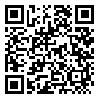Volume 8, Issue 16 (2022)
QHTS 2022, 8(16): 76-104 |
Back to browse issues page
1- Meybod university , r.nazari@meybod.ac.ir
2- Meybod university
2- Meybod university
Abstract: (1635 Views)
Translation is one of the ways through which ideology can be reproduced. Consequently, methods of discourse analysis can provide appropriate criteria for evaluating translators’ performance. Mojahedin Khalq who pay special attention to Nahj al-Balagha for representing their thought seem to transfer their institutional ideology while translating Imam Ali’s words. The study used a descriptive-analytical method and library resources to explore ideological viewpoint of Mojahedin while translating using Van Leeuwen’s approach. The approach is based on socio-semantic criteria and is divided generally into represention and deletion. The study showed that Mojahedin uses representing strategy more than deletion in their translation. In rendering fifty part of Nahj al-Balagha, activation, categorization, nomination, inclusion, exclusion, specification and deletion have been used. Amongst the elements, nomination, categorization and exclusion are the most frequent ones. Through representing social actors, Mojahedin have provided a special definition of revolutionary action. They then categorize the agents and invite people to them. Applying the elements have made Mojahedin create a version of Nahj al-Balagha that institutional discourse works instead of Alavi’s discourse (related to Imam Ali).
Keywords: Translation of Nahj al-Balaghah, Mojahedin Khalq group, Reproducing Ideology, Van Leeuwen’s Approach
Article Type: مقالات علمی پژوهشی |
Subject:
Arts and Humanities (General)
Received: 2021/05/19 | Accepted: 2021/07/31 | Published: 2022/02/9
Received: 2021/05/19 | Accepted: 2021/07/31 | Published: 2022/02/9
| Rights and permissions | |
 |
This work is licensed under a Creative Commons Attribution-NonCommercial 4.0 International License. |



